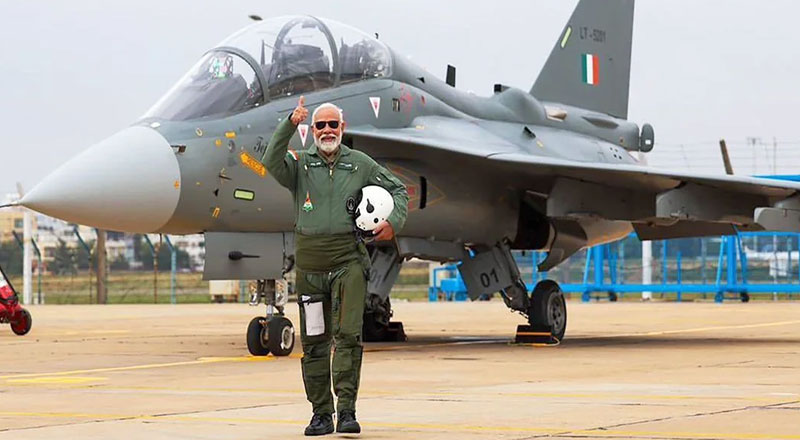Historic Ties, Strategic Collaboration
India and Sri Lanka have enjoyed a longstanding relationship marked by cultural affinity, historical bonds, and strategic cooperation. Since gaining independence in the mid-20th century, the two nations have built strong diplomatic ties. India has played a significant role in supporting Sri Lanka through numerous crises — including the recent economic meltdown and political unrest — by extending critical aid, debt restructuring support, and maritime collaboration.
However, despite the visible goodwill, Sri Lanka has, on several occasions, made decisions that appeared to diverge from India’s strategic interests in the region. The latest of these is Colombo’s surprising move in the defence sector — one that has raised eyebrows in New Delhi.
The Deal That Wasn’t: Sri Lanka Rejects India’s Tejas MK1
In a notable setback to India’s defence diplomacy, Sri Lanka has opted not to procure India’s indigenously developed fighter jet, the Tejas MK1, as part of its air force modernization programme. The decision comes despite earlier talks between the two countries regarding potential defence cooperation and aircraft acquisition.
India had pitched the Tejas as a reliable, cost-effective solution to meet Sri Lanka’s requirements for strengthening its air defence capabilities. Simultaneously, China had reportedly offered its JF-17 Thunder aircraft — jointly developed with Pakistan — as an alternative. But instead of aligning with either of its two most prominent regional partners, Sri Lanka charted a third course.
Why Tejas Was Turned Down
Rather than buying new aircraft, Sri Lanka has chosen to upgrade its existing fleet of Israeli-made Kfir fighter jets, which have been in service for decades. The government, under the leadership of President Anura Kumar Dissanayake, signed a $49 million agreement with Israeli Aerospace Industries to modernize five Kfir jets.
According to Sri Lankan defence sources, the decision was rooted in budgetary prudence and strategic familiarity. The Kfirs, though aged, still offer viable performance for a small air force when refurbished, and their upgrade was seen as a more economical alternative to procuring an entirely new fleet with different operational requirements and logistical demands.
Additionally, Sri Lanka’s internal security needs are currently not geared toward high-intensity aerial combat, reducing the urgency for advanced fighter jets like Tejas or JF-17. The move suggests a preference for operational continuity over capability expansion, at least in the short term.
Positive Signals Amid Defence Divergence
Despite the disappointment over the Tejas deal, Sri Lanka has reiterated its appreciation for India’s continued support. In a recent statement, Sri Lankan Deputy Minister of Defence Aruna Jayasekara praised India’s role in enhancing maritime security and combatting regional challenges such as drug trafficking, transnational crime, and climate change.
“The State Visit of Prime Minister Narendra Modi reaffirmed the shared vision of a secure and prosperous Indian Ocean Region. We deeply appreciate India’s unwavering support in strengthening Sri Lanka’s maritime capabilities,” Jayasekara said, reinforcing Colombo’s commitment to broad defence cooperation beyond air power.
Looking Ahead: Realigning Defence Goals
While the rejection of the Tejas MK1 may appear to be a diplomatic loss for India, it also underscores the realities of Sri Lanka’s defence priorities — shaped more by internal budget constraints and operational considerations than geopolitical leanings.
Going forward, India is expected to continue engaging Sri Lanka through maritime cooperation, joint exercises, training programs, and strategic aid. With China maintaining a growing influence in the region, India’s focus may shift towards long-term strategic partnerships, capacity-building, and people-to-people ties that enhance trust and alignment.
As defence and foreign policy evolve in South Asia, India will likely recalibrate its approach to ensure that short-term setbacks do not derail long-term strategic relationships with its neighbours.
(With inputs from agencies)





